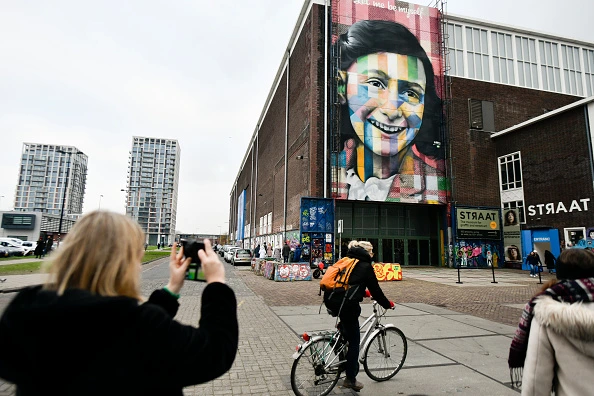
How a place sees and presents itself to the world is important. It impacts tourism, investment and the sense of community. Recently, however, there has been a move away from more patriotic national branding in the UK; instead, there has been a shift towards more brand localisation for places and destinations – be it a community, a neighbourhood or even just a street.

This change in how we view place reflects the lasting impact of the pandemic, which in many ways brought people closer together and left behind a stronger sense of community among people, even within cities.
In 2021, The National Lottery Community Fund found that the pandemic reignited people’s interest in their local community and sparked a desire to be more involved. The research showed that, across the UK, almost seven in ten people (69%) feel like they are part of their local community, with around a third acknowledging that Covid-19 has increased their sense of belonging (35%) and made it more important for them to feel part of it (33%).
More localised branding corresponds to this, as it allows the community to get behind a brand and even become ambassadors for it. This sort of branding allows the community to be involved in the process more because it’s easier for their voices to be heard than if working across a whole nation.
It’s also helped that funding is becoming increasingly more regionalised and localised, either from the government or from organisations such as Business Improvement Districts, meaning there is often a smaller, more localised team responsible for place branding.
Brand localisation is all in the detail
To brand a big nation it can become difficult to capture everything about the area that makes it special, whereas more localised places allow for more defined positions. It’s easier to create a coherent strategy and positioning in a smaller place. This provides more opportunities for the brand to create a specific story and tell it at a granular level.
A good example is places within London, such as the West End, Leicester Square, Soho or Carnaby Street – the more brand localisation you get, the stronger the sense of identity and the greater potential for a stronger story. Coal Drops Yard’s recent development really speaks specifically to a type of audience: the area’s brand is design-led, shown through the shapes and typography used, giving it a very distinct feel.
Or Amsterdam Noord: it’s not somewhere with an official brand identity but a part of Amsterdam that is trying to keep its soul and not give in to gentrification and over-tourism. There’s always something cool going on there: from festivals and flea markets to exhibitions and pop-ups. It feels massively different to the main city. It’s fresh, authentic and creative.
This can also apply outside of the big cities. Take the market town of Stroud in England. Recently it has been building its identity around its green credentials and care for the environment. Similarly, Hay-on-Wye in Wales has long built its reputation as a literary destination.
Searching for hidden gems
Tourism is also a factor in the rise of brand localisation. Travellers increasingly look on a smaller scale when they plan their trips, leading to smaller areas developing their own identities. Instead of France, perhaps they are interested in Bordeaux, or rather than London as a whole, maybe it’s Covent Garden or Shoreditch that attracts them.
Low-cost flights to more regional airports, and the rise in train travel across Europe connecting smaller cities and destinations all add to this drive, but it’s part of a wider trend of people wanting to uncover something unknown and feeling that their travel is more authentic and sustainable. It’s also fuelled by social media trends espousing the benefits of less busy places and “hidden gems”.
Brand localisation allows tourists to find the destination that suits them: do they love seafood? Why not try Whitstable in Kent? Looking for the best pizza in the world? Naples. Or it could be hobbies or specific cultural interests that they want to delve into.
Addressing localised community needs
Local and community brands are able to dig deep into what makes the place unique, and this allows them to speak to insiders and outsiders in a much more direct way. The rise has also resulted in increased discussions about the 15-minute city: the concept that life’s necessities – shops, healthcare, schools – should be within walking or cycling distance from any point within the city. Unfortunately, this has also given rise to bizarre conspiracy theories.
This localisation also provides an opportunity for each neighbourhood to have its own story and sense of identity.
There’s more opportunity to create civic and local pride in an area, as local authorities can put their stamp on how their 15-minute neighbourhood differs from another one: is it greener? Have more co-working spaces? More shops? The main point for these localised place brands is involving the community directly throughout.
These are the people who understand what makes the place special, get them on board and you have the best ambassadors for the brand you could hope for.
[Read more: Place branding: 6 reasons why a city might fail]






